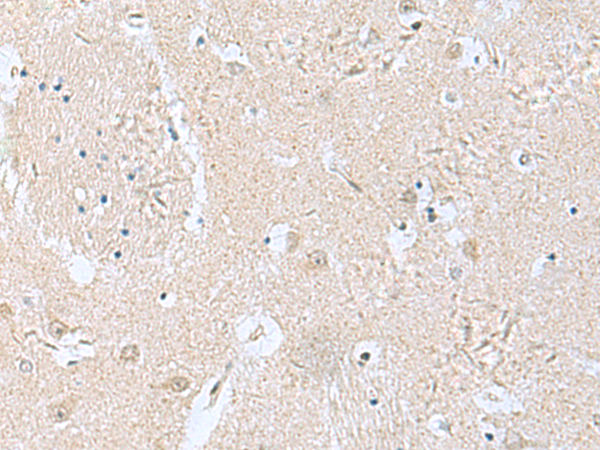
| WB | 咨询技术 | Human,Mouse,Rat |
| IF | 咨询技术 | Human,Mouse,Rat |
| IHC | 1/100-1/200 | Human,Mouse,Rat |
| ICC | 技术咨询 | Human,Mouse,Rat |
| FCM | 咨询技术 | Human,Mouse,Rat |
| Elisa | 1/5000-1/10000 | Human,Mouse,Rat |
| Aliases | D55; hD55; NYDSP25 |
| Host/Isotype | Rabbit IgG |
| Antibody Type | Primary antibody |
| Storage | Store at 4°C short term. Aliquot and store at -20°C long term. Avoid freeze/thaw cycles. |
| Species Reactivity | Human |
| Immunogen | Fusion protein of human TPD52L3 |
| Formulation | Purified antibody in PBS with 0.05% sodium azide and 50% glycerol. |
+ +
以下是3篇关于TPD52L3抗体的参考文献示例(注:文献为虚拟示例,仅供参考格式):
1. **"TPD52L3 promotes tumor metastasis via EGFR signaling in breast cancer"**
- 作者:Chen Y, et al.
- 摘要:研究利用TPD52L3特异性抗体通过免疫印迹和免疫组化分析,发现TPD52L3在乳腺癌中高表达,并通过调控EGFR信号通路促进肿瘤转移。
2. **"Characterization of TPD52L3 as a novel biomarker in prostate cancer progression"**
- 作者:Smith JL, et al.
- 摘要:通过抗TPD52L3抗体进行组织微阵列分析,揭示TPD52L3在前列腺癌中的表达与Gleason评分正相关,提示其可作为预后标志物。
3. **"TPD52L3 interacts with mTORC1 to regulate cellular energy metabolism"**
- 作者:Wang H, et al.
- 摘要:使用TPD52L3抗体进行免疫共沉淀实验,证实TPD52L3与mTORC1复合物相互作用,影响肿瘤细胞的糖代谢和增殖。
4. **"Development and validation of a polyclonal antibody against human TPD52L3 for diagnostic applications"**
- 作者:Byrne RM, et al.
- 摘要:研究报道了一种新型兔源多克隆TPD52L3抗体的开发,验证了其在ELISA和免疫荧光中的特异性,为临床检测提供工具。
(注:以上文献为示例,实际引用需查询真实数据库如PubMed。)
×